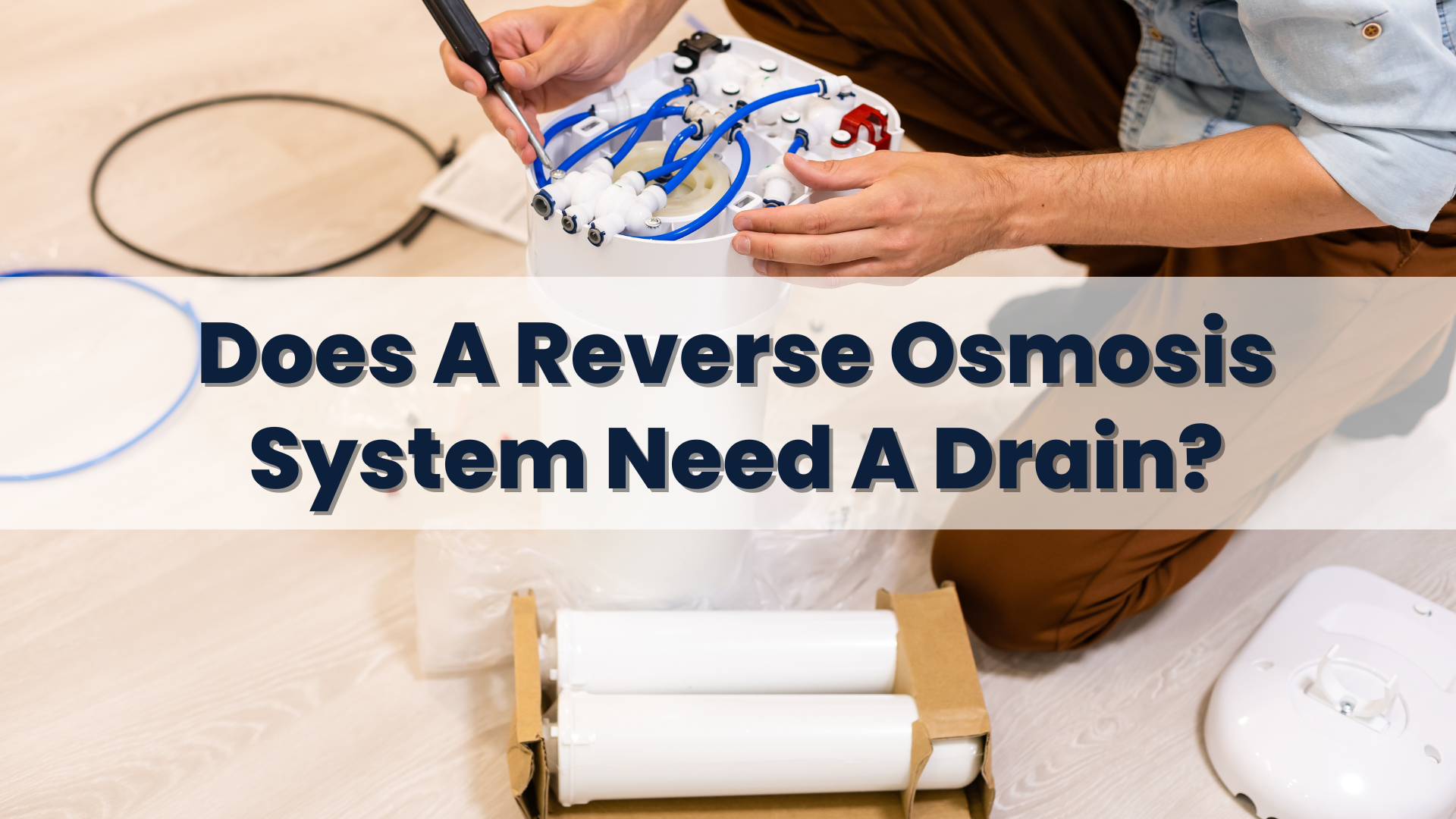Yes, a reverse osmosis system needs a drain in order to function properly. The water that passes through the filtration process is sent out as waste and must be drained away from the unit. This is to prevent any backflow or contamination that might occur if it were allowed to remain within the system. Additionally, there are multiple stages of filtration, which will increase the amount of water being drained away from the system. The drain can either be connected to a sink or an external drainage system. For larger systems, it is advisable to use an external drainage system in order to prevent any potential flooding. It is important to ensure that the drain connection is properly sealed and secure, and the water is being drained away from the system in a safe manner. With proper installation and maintenance, a reverse osmosis system can last for many years.
Why Does A Reverse Osmosis System Need A Drain?
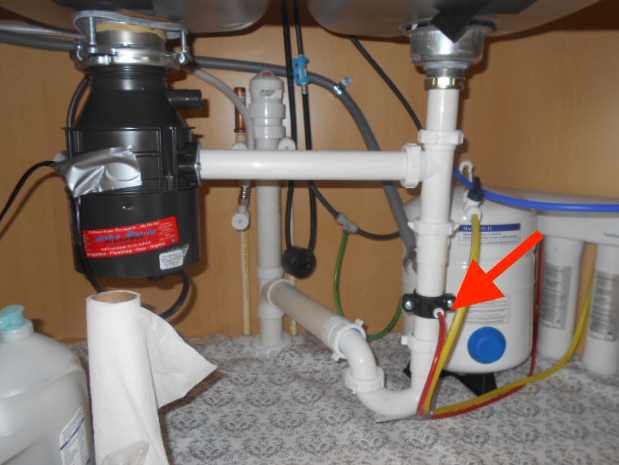
Reverse osmosis systems rely on a process of removing particles and chemicals from water by pushing it through a semi-permeable membrane. To do this, the system needs to be able to flush away the contaminants that are rejected at the membrane. This is why you will need to have a drain installed when installing a reverse osmosis system. Without a drain, the contaminants would build up and reduce the efficiency of the system.
Where Does The Drain Have To Be Connected To?

The drain connection for a reverse osmosis system needs to be connected to a sink, floor or a drain pipe. It is important that the piping used between the drain and the reverse osmosis system has enough capacity to handle the filtered water discharged by the system. If the discharge line is not large enough, it can lead to backflow, leading to flooding. It is important that the line is correctly sized and installed according to local codes and regulations. Additionally, an air gap must be present between the drain connection and the water source in order to prevent potential back-siphonage of contaminated water into the supply lines or drinking water system.
Does The Drain Have To Be Right Next To The Reverse Osmosis System?
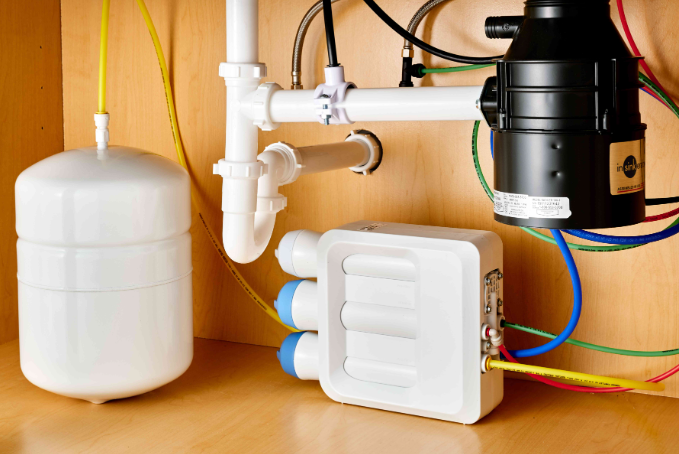
No, it does not. The drain can be located anywhere in the home that has a gravity-fed downward flow, such as a basement or garage. If the drain is further away than this, you may need to install an additional pump to provide sufficient drainage pressure and flow rate. You should also make sure that the drain line is properly sloped so that the wastewater can flow away from the reverse osmosis system. Additionally, you should use a check valve to prevent backflow of wastewater into the system. With all these considerations in mind, it is important to consult a professional plumber if you are unsure about installation requirements for your specific system and location.
Does The Drain Line Need To Be A Certain Size?
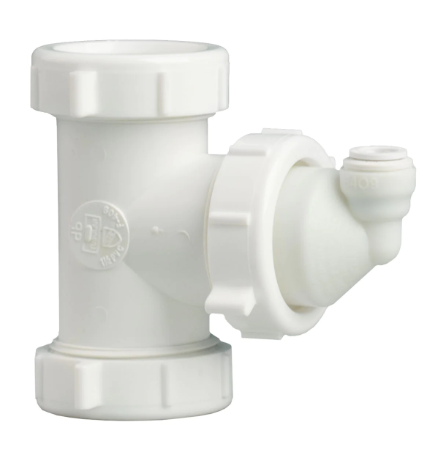
Yes, the drain line needs to be a certain size. Generally, you will need to use a minimum of ¼ inch or larger non-toxic drain line. This is because the reverse osmosis system pushes out wastewater at high pressure which can cause clogging if the line is too small. It is important that any drain line used has the correct diameter and can handle high pressure water flow. Additionally, it is important that the drain line be installed with a slope of at least 1/4” per foot to ensure proper drainage.
Are There Water Filters That Do Not Need A Drain?
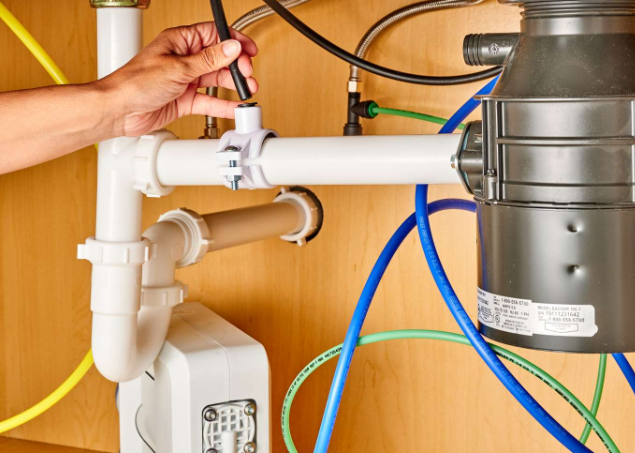
Yes, there are water filters that do not require a drain. Reverse osmosis (RO) systems are one example of these types of water filters. RO systems use a special membrane to filter out impurities in the water and then push purified water into storage tanks. This means that filtered water is stored in the tank and does not need to be drained anywhere. This makes them ideal for areas where drainage is not available or difficult to install. Another type of water filter that does not need to drain is a carbon filter, which uses activated charcoal to absorb harmful contaminants from the water. Carbon filters usually have built-in reservoirs that collect and store filtered water, so no draining is required. Regardless of which type of filter you choose, these types of water filters can provide clean and safe drinking water without the need for a drain.
How To Drain Reverse Osmosis Tank?
1. To effectively drain a reverse osmosis tank, you’ll need to connect the discharge tube of the RO system to an existing sink drain or set up a separate dedicated drain line.
2. Make sure that the drain pipe is installed below the overflow level of the storage/pressure tank, so as to prevent backflow and contamination.
3. The drain line should be installed according to local building codes, with the proper fittings, materials, and ventilation. If installing a dedicated drain line, it is important to ventilate the pipe using air admittance valves or vents that are placed at least 18 inches above grade level.
4. Test the line to ensure that it is properly connected and sealed.
5. Flush out the entire system prior to using it, to remove any debris or contaminants that may have collected during installation.
6. Cleaning the tank is also important; use a mild detergent and warm water solution to rinse away any build-up from the interior of the tank.
7. If a reverse osmosis system is being installed in an area with cold climates, it is best to install a freeze protection valve or pipe insulation to prevent freezing and bursting of pipes during winter months.
8. Finally, if a drain line isn’t available or feasible, install a drain valve or a bleeder system to manually drain the tank.
How Long Should Reverse Osmosis Drain?
Generally, the drain line of a reverse osmosis system should not exceed 25 feet in length. This helps ensure adequate water pressure and prevent any air bubbles that could form near the drain connection from blocking it. If possible, place the outlet for the drain line on the lower side of your sink or other drainage fixture to maximize the water pressure. Additionally, be sure to secure the drain connection with a hose clamp to prevent any leaks. Depending on your water pressure and system capacity, it is not recommended that you exceed a 5-foot horizontal distance between the outlet of the reverse osmosis system and the inlet of your drain fixture. For best results, place your drainage outlet no higher than 4 inches above the floor. This will help reduce the chances of clogging and ensure that your system operates as intended.
Types Of Drain Connections For RO Systems
- Air gap: An air gap is a connection that does not allow water to flow out of the reverse osmosis system. Instead, this connection sends the waste water into a sink drain or garbage disposal. This type of connection is ideal if you don’t want any waste water to go down your drains.
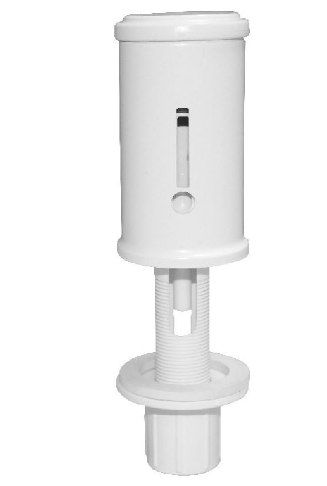
Air gap Drain - Non-air gap: Most reverse osmosis systems require a drain to be connected, so the reject water can be discharged and the system can keep cycling fresh water.
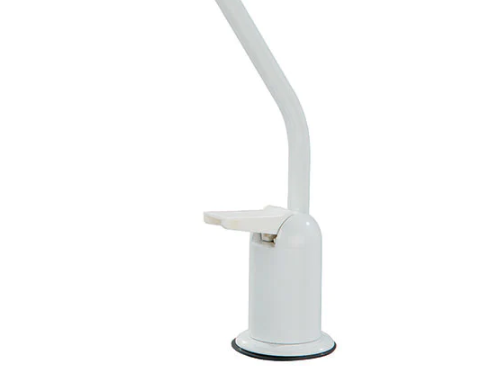
Non-air gap Drain
What Happens If You Don’t Have A Drain For Your Ro System?
If you don’t have a drain available for your reverse osmosis system, you’ll need an alternative solution. Many people opt to create their own collection tank from PVC pipe or another material that can store the waste water produced by their RO system. This prevents the need for drilling out a hole in your wall for draining and makes it easier to move the system if necessary. You may also need a small pump and dedicated circuit for draining, depending on your setup. Some RO systems are even designed with a built-in collection tank with an overflow valve that leads the water to a suitable drain. If you don’t have any available drains in your home, you’ll need to come up with an alternative solution, such as the collection tank option.
Common Drain Issues with Reverse Osmosis Systems
- Clogs: The most common issue with the drains of a reverse osmosis system is a clog. Since the output from these systems contains a higher-than-normal concentration of dissolved solids, any residue left in the drain can accumulate quickly and cause blockages.

Clogs issue - Leaks: If your reverse osmosis system is installed correctly, you should not have any leaks. However, if the water pressure is too high, the seals and membranes of your system can become worn out over time which may lead to a small amount of water leaking from the drain line.
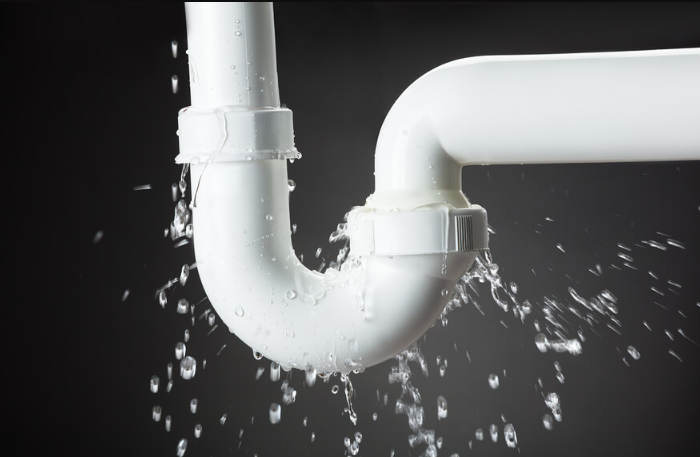
Leaks in drain
Benefits Of Using A Drain For Your RO System
- Improved water quality: Having a drain line installed for your reverse osmosis system will help keep the water quality high. This is because any residual or waste water that comes out of the system can be safely and conveniently discharged away from the drinking water supply. Reduced maintenance: Without a drain, you would have to manually empty the tank produced by your RO system
- Protection against damage and other issues: ro drain protect your system from potential damage by allowing it to flush out impurities that could clog the system. Removing waste and other contaminants helps to maintain the health of the reverse osmosis system, as well as reduce strain on its components.
FAQs
What is the difference between an air gap and a non-air gap drain?
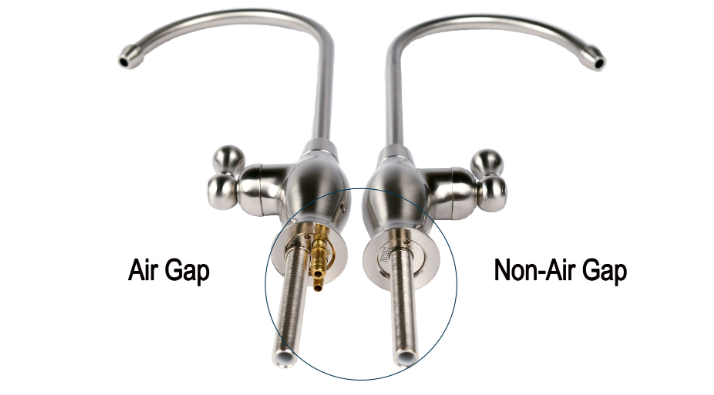
An air gap drain is a device that is installed between the water supply and the reverse osmosis system. This device prevents the backflow of contaminated water into the drinking water supply by creating a physical barrier, whereas a non-air gap drain does not have this feature. Air gap drains are recommended for any reverse osmosis system as they provide an extra layer of protection. Non-air gap drains can be used in systems that do not require a high level of safety, such as point-of-use appliances such as ice machines or coffee makers.
Can I use a dishwasher or garbage disposal with a reverse osmosis system?
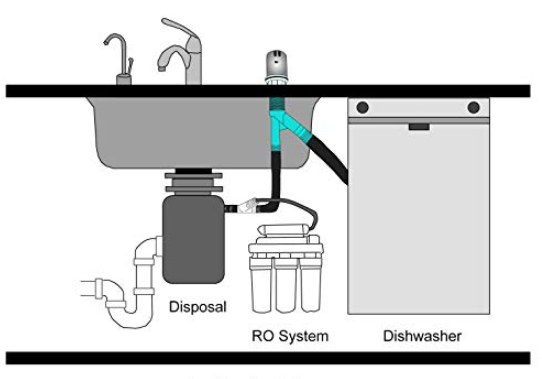
Yes, but you should be aware of the potential issues. Dishwashers and garbage disposals can push large amounts of wastewater through the drain lines that feed into your reverse osmosis system. This could cause clogs in the pre-filter or membrane housing, leading to poor water quality and equipment damage if not addressed promptly. As an added precaution, it is recommended to install a check valve on the drain line before it enters the reverse osmosis system. This will help ensure that wastewater does not backflow into your system and cause problems. Additionally, if you have an air gap faucet installed in your kitchen sink, this should also be taken into consideration when using a dish
What should I do if my RO system’s drain is clogged?

If your reverse osmosis system’s drain is clogged, it could cause a number of problems. To prevent this from happening, it’s important to regularly maintain your RO system and clean the drain periodically. If the drain has become clogged, you may need to use a plunger or a plumbing snake to clear out any debris that is blocking it. You may also want to use a chemical drain cleaner to help clear out any accumulated debris that could be causing the problem. It’s important to avoid using harsh chemicals on your RO system, as this can cause damage and reduce its effectiveness. If the clog persists, you may need to call a professional plumber for assistance in resolving the issue.
How much does it cost to install a drain for a reverse osmosis system?

The cost of installing a drain for a reverse osmosis system depends on the complexity of the plumbing and size of the system. Generally speaking, you can expect to pay anywhere between $100-$400 for installation. Factors such as type of materials used, complexity of the job and location may all contribute to the total cost. Additionally, if you choose to hire a professional plumber, additional fees may apply.
Conclusion
Yes, a reverse osmosis system does need a drain. The water produced by the system is drained away and discharged into a sink, floor drain, or other suitable drainage facility. This helps to keep it separate from your drinking water supply and ensures that any contaminants are removed before they can find their way back in again. It also helps prevent build-up of waste and any other forms of contamination which can occur when the reverse osmosis system is in operation. Installing a drain near the RO unit ensures that all wastewater is quickly and easily disposed of, leaving your home with clean, safe drinking water. Additionally, having a drain can make maintenance and repair of the unit easier than otherwise. So if you have a reverse osmosis system in your home, make sure to install a drain near it so that the water produced by the system can be discharged safely.

Meet Nigel Pearson, a water filter enthusiast with a background in molecular biology. He’s all about making sure we have safe drinking water, and he’s got a bunch of interests that tie into it – think science, technology, plants, and genetics.
Imagine someone who loves learning how living things work on a tiny level – that’s Nigel. He’s studied how genes and molecules come together to make life happen. But what really caught his attention is how living things adapt to their surroundings.
Nigel didn’t stop at just learning about this stuff – he decided to use his smarts to help solve a big problem: how to get clean drinking water for everyone. He writes cool blog posts that explain tricky science things in simple words. You’ll get to read about stuff like how plants can help clean water, or how new inventions are changing the way we purify water.
But it’s not just about science and tech for Nigel. He truly cares about people and their need for safe water. Every blog post he writes shows how much he wants to make a difference. By sharing his knowledge, she wants to get more people thinking and caring about clean drinking water.
